Normothermic and hypothermic machine perfusion preservation versus static cold storage for deceased donor kidney transplantation
- PMID: 38979743
- PMCID: PMC11232102
- DOI: 10.1002/14651858.CD011671.pub3
Normothermic and hypothermic machine perfusion preservation versus static cold storage for deceased donor kidney transplantation
Abstract
Background: Kidney transplantation is the optimal treatment for kidney failure. Donation, transport and transplant of kidney grafts leads to significant ischaemia reperfusion injury. Static cold storage (SCS), whereby the kidney is stored on ice after removal from the donor until the time of implantation, represents the simplest preservation method. However, technology is now available to perfuse or "pump" the kidney during the transport phase ("continuous") or at the recipient centre ("end-ischaemic"). This can be done at a variety of temperatures and using different perfusates. The effectiveness of these treatments manifests as improved kidney function post-transplant.
Objectives: To compare machine perfusion (MP) technologies (hypothermic machine perfusion (HMP) and (sub) normothermic machine perfusion (NMP)) with each other and with standard SCS.
Search methods: We contacted the information specialist and searched the Cochrane Kidney and Transplant Register of Studies until 15 June 2024 using search terms relevant to this review. Studies in the Register are identified through searches of CENTRAL, MEDLINE, and EMBASE, conference proceedings, the International Clinical Trials Registry Platform (ICTRP) Search Portal, and ClinicalTrials.gov.
Selection criteria: All randomised controlled trials (RCTs) and quasi-RCTs comparing machine perfusion techniques with each other or versus SCS for deceased donor kidney transplantation were eligible for inclusion. All donor types were included (donor after circulatory death (DCD) and brainstem death (DBD), standard and extended/expanded criteria donors). Both paired and unpaired studies were eligible for inclusion.
Data collection and analysis: The results of the literature search were screened, and a standard data extraction form was used to collect data. Both of these steps were performed by two independent authors. Dichotomous outcome results were expressed as risk ratios (RR) with 95% confidence intervals (CI). Survival analyses (time-to-event) were performed with the generic inverse variance meta-analysis of hazard ratios (HR). Continuous scales of measurement were expressed as a mean difference (MD). Random effects models were used for data analysis. The primary outcome was the incidence of delayed graft function (DGF). Secondary outcomes included graft survival, incidence of primary non-function (PNF), DGF duration, economic implications, graft function, patient survival and incidence of acute rejection. Confidence in the evidence was assessed using the Grading of Recommendations Assessment, Development and Evaluation (GRADE) approach.
Main results: Twenty-two studies (4007 participants) were included. The risk of bias was generally low across all studies and bias domains. The majority of the evidence compared non-oxygenated HMP with standard SCS (19 studies). The use of non-oxygenated HMP reduces the rate of DGF compared to SCS (16 studies, 3078 participants: RR 0.78, 95% CI 0.69 to 0.88; P < 0.0001; I2 = 31%; high certainty evidence). Subgroup analysis revealed that continuous (from donor hospital to implanting centre) HMP reduces DGF (high certainty evidence). In contrast, this benefit over SCS was not seen when non-oxygenated HMP was not performed continuously (low certainty evidence). Non-oxygenated HMP reduces DGF in both DCD and DBD settings in studies performed in the 'modern era' and when cold ischaemia times (CIT) were short. The number of perfusions required to prevent one episode of DGF was 7.69 and 12.5 in DCD and DBD grafts, respectively. Continuous non-oxygenated HMP versus SCS also improves one-year graft survival (3 studies, 1056 participants: HR 0.46, 0.29 to 0.75; P = 0.002; I2 = 0%; high certainty evidence). Assessing graft survival at maximal follow-up confirmed a benefit of continuous non-oxygenated HMP over SCS (4 studies, 1124 participants (follow-up 1 to 10 years): HR 0.55, 95% CI 0.40 to 0.77; P = 0.0005; I2 = 0%; high certainty evidence). This effect was not seen in studies where HMP was not continuous. The effect of non-oxygenated HMP on our other outcomes (PNF, incidence of acute rejection, patient survival, hospital stay, long-term graft function, duration of DGF) remains uncertain. Studies performing economic analyses suggest that HMP is either cost-saving (USA and European settings) or cost-effective (Brazil). One study investigated continuous oxygenated HMP versus non-oxygenated HMP (low risk of bias in all domains); the simple addition of oxygen during continuous HMP leads to additional benefits over non-oxygenated HMP in DCD donors (> 50 years), including further improvements in graft survival, improved one-year kidney function, and reduced acute rejection. One large, high-quality study investigated end-ischaemic oxygenated HMP versus SCS and found end-ischaemic oxygenated HMP (median machine perfusion time 4.6 hours) demonstrated no benefit compared to SCS. The impact of longer periods of end-ischaemic HMP is unknown. One study investigated NMP versus SCS (low risk of bias in all domains). One hour of end ischaemic NMP did not improve DGF compared with SCS alone. An indirect comparison revealed that continuous non-oxygenated HMP (the most studied intervention) was associated with improved graft survival compared with end-ischaemic NMP (indirect HR 0.31, 95% CI 0.11 to 0.92; P = 0.03). No studies investigated normothermic regional perfusion (NRP) or included any donors undergoing NRP.
Authors' conclusions: Continuous non-oxygenated HMP is superior to SCS in deceased donor kidney transplantation, reducing DGF, improving graft survival and proving cost-effective. This is true for both DBD and DCD kidneys, both short and long CITs, and remains true in the modern era (studies performed after 2008). In DCD donors (> 50 years), the simple addition of oxygen to continuous HMP further improves graft survival, kidney function and acute rejection rate compared to non-oxygenated HMP. Timing of HMP is important, and benefits have not been demonstrated with short periods (median 4.6 hours) of end-ischaemic HMP. End-ischaemic NMP (one hour) does not confer meaningful benefits over SCS alone and is inferior to continuous HMP in an indirect comparison of graft survival. Further studies assessing NMP for viability assessment and therapeutic delivery are warranted and in progress.
Trial registration: ClinicalTrials.gov NCT02525510 NCT04744389 NCT01170910 NCT04569682 NCT04181710 NCT04882254 NCT02621281 NCT05031052 NCT05743751.
Copyright © 2024 The Cochrane Collaboration. Published by John Wiley & Sons, Ltd.
Conflict of interest statement
Samuel J Tingle: No relevant interests were disclosed
Emily R Thompson: No relevant interests were disclosed
Rodrigo S Figueiredo: No relevant interests were disclosed
John AG Moir: No relevant interests were disclosed
Michael Goodfellow: No relevant interests were disclosed
David Talbot: No relevant interests were disclosed
Colin H Wilson: No relevant interests were disclosed
Figures


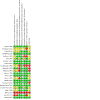



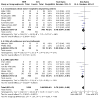


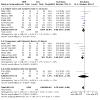
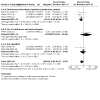
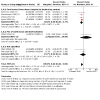

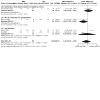

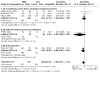
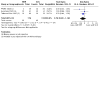
Update of
-
Machine perfusion preservation versus static cold storage for deceased donor kidney transplantation.Cochrane Database Syst Rev. 2019 Mar 15;3(3):CD011671. doi: 10.1002/14651858.CD011671.pub2. Cochrane Database Syst Rev. 2019. Update in: Cochrane Database Syst Rev. 2024 Jul 9;7:CD011671. doi: 10.1002/14651858.CD011671.pub3. PMID: 30875082 Free PMC article. Updated.
References
References to studies included in this review
Alijani 1985 {published data only}
-
- Alijani MR, Cutler JA, DelValle CJ, Morres DN, Fawzy A, Pechan BW, et al. Single-donor cold storage versus machine perfusion in cadaver kidney preservation. Transplantation 1985;40(6):659-61. [MEDLINE: ] - PubMed
Amaduzzi 2011 {published data only}
-
- Amaduzzi A, Catena F, Montori G, Ravaioli M, Pinna A. Hypotermic machine perfusion (HMP) versus static cold storage (CS) in kidney allograft preservation. Prospective case-control trial [abstract no: RO-077]. Transplant International 2011;24(Suppl 2):151. [EMBASE: 70527605]
Chen 2014c {published data only}
-
- Chen G, Ko D, Wang C, Yuan X, Qiu J, Han M, et al. Impact of machine perfusion on outcomes of kidney transplantation from donation after cardiac death: a prospective randomized controlled trial [abstract no: D2675]. Transplantation 2014;98(Suppl 1):267. [EMBASE: 71544357]
COMPARE 2020 {published data only}
-
- Jochmans I, Brat A, Davies L, Hofker HS, de Leemkolk FE, Leuvenink HG, et al. Oxygenated versus standard cold perfusion preservation in kidney transplantation (COMPARE): a randomised, double-blind, paired, phase 3 trial. Lancet 2020;396(10263):1653-62. [DOI: 10.1016/S0140-6736(20)32411-9] [PMID: ] - DOI - PubMed
-
- Jochmans I, Hofker HS, Davies L, Knight S, Pirenne J, Ploeg RJ. Oxygenated hypothermic machine perfusion of kidneys donated after circulatory death: an international randomised controlled trial [abstract no: 2]. American Journal of Transplantation 2019;19(Suppl 3):312. [EMBASE: 628453459]
-
- Mulvey JF, Shaheed SU, Charles PD, Snashall C, Lo Faro ML, Sutton CW, et al. Perfusate proteomes provide biological insight Into oxygenated versus standard hypothermic machine perfusion in kidney transplantation. Annals of Surgery 2023;278(5):676‐82. [DOI: 10.1097/SLA.0000000000006046] [PMID: ] - DOI - PubMed
Halloran 1985 {published data only}
-
- Halloran P, Aprile M, Robinette M. A randomized prospective trial of cold storage versus pulsatile perfusion for cadaver kidney preservation. Transplantation Proceedings 1985;17(1 II):1471-3. [EMBASE: 15130743] - PubMed
-
- Halloran P, Aprile M. A randomized prospective trial of cold storage versus pulsatile perfusion for cadaver kidney preservation. Transplantation 1987;43(6):827-32. [MEDLINE: ] - PubMed
Heil 1987 {published data only}
-
- Heil JE, Canafax DM, Sutherland DE, Simmons RL, Dunning M, Najarian JS. A controlled comparison of kidney preservation by two methods: machine perfusion and cold storage. Transplantation Proceedings 1987;19(1 Pt 3):2046. [MEDLINE: ] - PubMed
Hosgood 2017 {published data only}
-
- Hosgood S, Callaghan C, Wilson C, Oniscu G, Phillips B, Bates L, et al. A randomised trial of normothermic machine perfusion versus static cold storage in donation after circulatory death renal transplantation [abstract no: 9001]. American Journal of Transplantation 2022;22(Suppl 3):593‐4. [DOI: 10.1111/ajt.17072] [EMBASE: 639186743] - DOI
-
- Hosgood SA, Saeb-Parsy K, Wilson C, Callaghan C, Collett D, Nicholson ML. Protocol of a randomised controlled, open-label trial of ex vivo normothermic perfusion versus static cold storage in donation after circulatory death renal transplantation. BMJ Open 2017;7(1):e012237. [DOI: 10.1136/bmjopen-2016-012237] [PMID: ] - DOI - PMC - PubMed
Husen 2021 {published data only}63852508
Kwiatkowski 1996 {published data only}
-
- Danielewicz R, Kwiatkowski A, Polak W, Kosieradzki M, Michalak G, Wegrowicz I, et al. An assessment of ischemic injury of the kidney for transplantation during machine pulsatile preservation. Transplantation Proceedings 1997;29(8):3580-1. [MEDLINE: ] - PubMed
-
- Kosieradzki M, Danielewicz R, Kwiatkowski A, Polak W, Wegrowicz-Rebandel I, Walaszewski J, et al. Rejection rate and incidence of acute tubular necrosis after pulsatile perfusion preservation. Transplantation Proceedings 1999;31(1-2):278-9. [MEDLINE: ] - PubMed
-
- Kwiatkowski A, Danielewicz R, Polak W, Michalak G, Paczek L, Walaszewski J, et al. Storage by continuous hypothermic perfusion for kidney harvested from hemodynamically unstable donors. Transplantation Proceedings 1996;28(1):306-7. [MEDLINE: ] - PubMed
-
- Kwiatkowski A, Wszola M, Kosieradzki M, Danielewicz R, Ostrowski K, Domagala P, et al. The early and long term function and survival of kidney allografts stored before transplantation by hypothermic pulsatile perfusion. A prospective randomized study. Annals of Transplantation 2009;14(1):14-7. [MEDLINE: ] - PubMed
-
- Wszola M, Kwiatkowski A, Kosieradzki M, Danielewicz R, Ostrowski K, Domagala P, et al. Machine perfusion (MP) and cold storage (CS) of kidneys allografts - prospective study of long-term function [abstract no: P941]. Transplant International 2007;20(Suppl 2):322.
Malinoski 2023 {published data only}
-
- Malinoski D, Swain SL, Groat T, Garza A, Niemann C. A randomized trial of mild hypothermia and machine perfusion in deceased organ donors for protection against delayed graft function in kidney transplant recipients [abstract no: TH-PO1164]. Journal of the American Society of Nephrology 2018;29(Abstract Suppl):B9.
Matsuno 1994 {published data only}
-
- Matsuno N, Sakurai E, Tamaki I, Uchiyama M, Kozaki K, Kozaki M. The effect of machine perfusion preservation versus cold storage on the function of kidneys from non-heart-beating donors. Transplantation 1994;57(2):293-4. [MEDLINE: ] - PubMed
Merion 1990 {published data only}
-
- Merion RM, Oh HK, Port FK, Toledo-Pereyra LH, Turcotte JG. A prospective controlled trial of cold-storage versus machine-perfusion preservation in cadaveric renal transplantation. Transplantation 1990;50(2):230-3. [MEDLINE: ] - PubMed
Moers 2009 {published data only}83876362
-
- Gallinat A, Moers C, Treckmann J, Smits JM, Leuvenink HG, Lefering R, et al. Machine perfusion versus cold storage for the preservation of kidneys from donors >= 65 years allocated in the Eurotransplant Senior Programme. Nephrology Dialysis Transplantation 2012;27(12):4458-63. [MEDLINE: ] - PubMed
-
- Garfield SS, Poret AW, Evans RW. The cost-effectiveness of organ preservation methods in renal transplantation: US projections based on the machine preservation trial. Transplantation Proceedings 2009;41(9):3531-6. [MEDLINE: ] - PubMed
-
- Groen H, Moers C, Smits JM, Treckmann J, Monbaliou D, Rahmel A, et al. Machine perfusion versus static cold storage in kidney transplant [abstract no: O10.4]. Annals of the Academy of Medicine of Singapore 2009;38(Suppl 6):S44. [CENTRAL: CN-00747267]
-
- Groen H, Moers C, Smits JM, Treckmann J, Monbaliu D, Rahmel A, et al. Cost-effectiveness of hypothermic machine preservation versus static cold storage in renal transplantation. American Journal of Transplantation 2012;12(7):1824-30. [MEDLINE: ] - PubMed
-
- Groen H, Moers C, Smits JM, Treckmann J, Van Gelder F, Rahmel A, et al. Cost-effectiveness of hypothermic machine perfusion versus static cold storage in kidney transplantation: first results of the prospective European RCT [abstract no: 265]. Transplantation 2008;86(2 Suppl):93. [CENTRAL: CN-00747268]
Mozes 1985 {published data only}
-
- Mozes MF, Finch WT, Reckard CR. Comparison of cold storage and machine perfusion in the preservation of cadaver kidneys: a prospective, randomized study. Transplantation Proceedings 1985;17(1 II):1474-7. [EMBASE: 15130744]
PPART 2010 {published data only}95022818
-
- Goldfarb DA. Re: Cold machine perfusion versus static cold storage of kidneys donated after cardiac death: A UK multicenter randomized controlled trial. Journal of Urology 2011;186(4):1392-3. [EMBASE: 362546154] - PubMed
-
- Watson C, Wells A, Roberts R, Akoh J, Friend P, Akyol M. Machine preservation of kidneys donated after cardiac death does not reduce delayed graft function: the PPart Study [abstract no: 232]. Transplantation 2008;86(2 Suppl):81. [CENTRAL: CN-00765610]
-
- Watson C, Wells A, Roberts R, Blackwell J, Akoh J, Friend P, et al. Machine preservation of kidneys donated after cardiac death does not reduce delayed graft function [abstract no: 246]. American Journal of Transplantation 2008;8(Suppl 2):244. [CENTRAL: CN-00765609]
-
- Watson CJ, Wells AC, Roberts RJ, Akoh JA, Friend PJ, Akyol M, et al. Cold machine perfusion versus static cold storage of kidneys donated after cardiac death: a UK multicenter randomized controlled trial. American Journal of Transplantation 2010;10(9):1991-9. [MEDLINE: ] - PubMed
-
- Wells A, Roberts R, Blackwell J, Akoh J, Friend P, Akyol M, et al. Machine preservation of kidneys donated after cardiac death does not reduce delayed graft function: the PPART study [abstract no: O19]. In: British Transplantation Society (BTS).11th Annual Congress; 2008 Apr 16-18; Glasgow, UK. 2008.
Summers 2020 {published data only}50082383
-
- Summers D, Randle L, O'Sullivan A, Johnson R, Collett D, Attia M, Ahmad N, Clancy M, Akyol M, Tavakoli A, Jamieson N, Bradley A, Watson C. Cold pulsatile machine perfusion versus static cold storage in kidneys from donation after circulatory death: A multi-centre randomised controlled trial [abstract] [Cold pulsatile machine perfusion versus static cold storage in kidneys from donation after circulatory death: A multi-centre randomised controlled trial [abstract]]. American Journal of Transplantation 2018;18(Suppl 4):453. - PubMed
-
- Summers DM, Ahmad N, Randle LV, O'Sullivan AM, Johnson RJ, Collett D, et al. Cold pulsatile machine perfusion versus static cold storage for kidneys donated after circulatory death: a multicenter randomized controlled trial. Transplantation 2020;104(5):1019-25. [DOI: 10.1097/TP.0000000000002907] [PMID: ] - DOI - PubMed
Tedesco‐Silva 2017 {published data only}
-
- Marinho Neto H, Aires V, Offerni J, Luconi W, Luconi P, Braga S, et al. The influence of static versus machine dynamic perfusion kidney graft preservation on delayed graft function incidence: a prospective, randomized study [abstract no: C179]. American Journal of Transplantation 2016;16(Suppl 3):658-9. [EMBASE: 611699172]
-
- Tedesco Silva H Jr, Evans RW, Gavaghan MB, Vazquez VC. A cost-effectiveness analysis of organ preservation methods for deceased donor kidneys at high risk for delayed graft function in Brazil. Transplantation Proceedings 2018;50(10):3121-7. [PMID: ] - PubMed
-
- Tedesco-Silva H Jr, Mello Offerni JC, Ayres Carneiro V, Ivani de Paula M, Neto ED, Brambate Carvalhinho Lemos F, et al. Randomized trial of machine perfusion versus cold storage in recipients of deceased donor kidney transplants with high incidence of delayed graft function. Transplantation Direct 2017;3(5):e155. [MEDLINE: ] - PMC - PubMed
van der Vliet 2001 {published data only}
-
- Vliet JA, Kievit JK, Hene RJ, Hilbrands LB, Kootstra G. Preservation of non-heart-beating donor kidneys: a clinical prospective randomised case-control study of machine perfusion versus cold storage. Transplantation Proceedings 2001;33(1-2):847. [MEDLINE: ] - PubMed
Veller 1994 {published data only}
-
- Veller MG, Botha JR, Britz RS, Gecelter GR, Beale PG, Margolius LP, et al. Renal allograft preservation: a comparison of University of Wisconsin solution and of hypothermic continuous pulsatile perfusion. Clinical Transplantation 1994;8(2 (Pt 1)):97-100. [MEDLINE: ] - PubMed
Wang 2017 {published data only}
-
- Wang W, Xie D, Hu X, Yin H, Liu H, Zhang X. Effect of hypothermic machine perfusion on the preservation of kidneys donated after cardiac death: a single-center, randomized, controlled trial. Artificial Organs 2017;41(8):753-8. [MEDLINE: ] - PubMed
Wszola 2013 {published data only}
-
- Wszola M, Domagala P, Diuwe P, Kwiatkowski A, Gorski L, Kieszek R, et al. One-year transplantation results of kidneys preserved by machine perfusion - Lifeport kidney transporter versus waters RM3 - Prospective study [abstract no: O19-0041]. Transplant International 2012;25(Suppl 1):15. [EMBASE: 70759806]
-
- Wszola M, Domagala P, Diuwe P, Kwiatkowski A, Gorski L, Kieszek R, et al. One-year transplantation results of kidneys preserved by machine perfusion. LifePort kidney transporter versus Waters RM3-prospective study [abstract no: 648]. American Journal of Transplantation 2012;12(Suppl 3):221. [CENTRAL: CN-01658615]
-
- Wszola M, Kwiatkowski A, Diuwe P, Domagala P, Gorski L, Kieszek R, et al. One-year results of a prospective, randomized trial comparing two machine perfusion devices used for kidney preservation. Transplant International 2013;26(11):1088-96. [MEDLINE: ] - PubMed
Zhong 2017 {published data only}
-
- Zhong Z, Lan J, Ye S, Liu Z, Fan L, Zhang Y, et al. Outcome improvement for hypothermic machine perfusion versus cold storage for kidneys from cardiac death donors. Artificial Organs 2017;41(7):647-53. [MEDLINE: ] - PubMed
-
- Zhong Z, Liu Z, Fu Z, Zhang Y, Ko D, Wang Y, et al. Hypothermic machine perfusion improves kidney viability through amelioration of vasospasm and edema of podocytes and renal tubular epithelial cells [abstract]. American Journal of Transplantation 2015;15(Suppl 3):112. [EMBASE: 71953566]
References to studies excluded from this review
Alijani 1987 {published data only}
-
- Alijani MR, Helfrich GB, Fawzy A, Cutler JA, Bates SB, Andrews PM. Clinical evaluation of a new kidney cold storage solution [abstract]. Kidney International 1987;31(1):453. [CENTRAL: CN-00550449]
Axelrod 2019 {published data only}
Baatard 1993 {published data only}
-
- Baatard R, Pradier F, Dantal J, Karam G, Cantarovich D, Hourmant M, et al. Prospective randomized comparison of University of Wisconsin and UW-modified, lacking hydroxyethyl-starch, cold-storage solutions in kidney transplantation. Transplantation 1993;55(1):31-5. [MEDLINE: ] - PubMed
Diuwe 2017 {published data only}
-
- Diuwe P, Domagala P, Durlik M, Trzebicki J, Chmura A, Kwiatkowski A. The effect of the use of a TNF-alpha inhibitor in hypothermic machine perfusion on kidney function after transplantation. Contemporary Clinical Trials 2017;59:44-50. [CENTRAL: 28571996] [DOI: 10.1016/j.cct.2017.05.013] - DOI - PubMed
Guarrera 2004 {published data only}
-
- Guarrera JV, Polyak M, O'Mar AB, Kapur S, Stubenbord WT, Kinkhabwala M. Pulsatile machine perfusion with Vasosol solution improves early graft function after cadaveric renal transplantation.[Retraction in Stubenbord WT, Kinkhabwala M, Kapur S. Transplantation. 2005 Jun 27;79(12):1774; PMID: 15973193]. Transplantation 2004;77(8):1264-8. [MEDLINE: ] - PubMed
Guarrera 2004a {published data only}
-
- Guarrera JV, Polyak MM, Arrington B, Boykin J, Brown T, Jean-Jacques MA, et al. Pushing the envelope in renal preservation; improved results with novel perfusate modifications for pulsatile machine perfusion of cadaver kidneys.[Erratum appears in Transplant Proc. 2004 Jul-Aug;36(6):1853 Note: O'Mar Arrington, B [corrected to Arrington, B]]. Transplantation Proceedings 2004;36(5):1257-60. [MEDLINE: ] - PubMed
Kassimatis 2017 {published data only}
-
- Kassimatis T, Qasem A, Douiri A, Ryan EG, Rebollo-Mesa I, Nichols LL, et al. A double-blind randomised controlled investigation into the efficacy of Mirococept (APT070) for preventing ischaemia reperfusion injury in the kidney allograft (EMPIRIKAL): study protocol for a randomised controlled trial. Trials 2017;18(1):255. [CENTRAL: 28587616] [DOI: 10.1186/s13063-017-1972-x] - DOI - PMC - PubMed
Lodge 1993 {published data only}
-
- Lodge JP, Kashi SH, Lam FT, Lord A, Giles GR. The reflush effect--a prospective analysis of late perfusion. Transplantation 1993;55(3):567-72. [MEDLINE: ] - PubMed
NCT04744389 {published data only}
-
- NCT04744389. Comparison of hypothermic versus normothermic ex-vivo preservation [Optimization of an evidence-based organizational model of liver and pancreas transplant using cardiac death donors: a pilot, prospective, randomized, multicenter study for the comparison of hypothermic versus normothermic ex-vivo preservation]. https://clinicaltrials.gov/show/NCT04744389 (first posted 9 February 2021).
Patel 2024 {published data only}
Polyak 1998 {published data only}
-
- Polyak MM, Arrington BO, Stubenbord WT, Kapur S, Kinkhabwala M. Prostaglandin E1 influences pulsatile preservation characteristics and early graft function in expanded criteria donor kidneys. Journal of Surgical Research 1999;85(1):17-25. [MEDLINE: ] - PubMed
-
- Polyak MM, Arrington BO, Stubenbord WT, Kinkhabwala M. Prostaglandin E1 improves pulsatile preservation characteristics and early graft function in expanded criteria donor kidneys. ASAIO Journal 1998;44(5):M610-2. [MEDLINE: ] - PubMed
Polyak 2002 {published data only}
-
- Polyak MM, Guarerra JV, Arrington BO, Kapur S, Stubenbord WT, Kinkhabwala M. Comparison of vasosol versus viaspan in the cold stored and machine preserved kidney [abstract]. In: XIXth International Congress of the Transplantation Society; 2002 Aug 25-30; Miami (FL). 2002. [CENTRAL: CN-00416475]
Ravaioli 2020 {published data only}
-
- Ravaioli M, De Pace V, Angeletti A, Comai G, Vasuri F, Baldassarre M, et al. Hypothermic oxygenated new machine perfusion system in liver and kidney transplantation of extended criteria donors: first Italian clinical trial [Erratum for: Sci Rep. 2020 Apr 8;10(1):6063]. Scientific reports 2020;10(1):6063. [CENTRAL: 32868780] [DOI: 10.1038/s41598-020-62979-9] - DOI - PMC - PubMed
Salazar‐Bauelos 2018 {published data only}
Tisone 1999 {published data only}
-
- Tisone G, Orlando G, Pisani F, Iaria G, Negrini S, Pollicita S, et al. Gravity perfusion versus high-pressure perfusion in kidney transplantation: results from a prospective randomized study. Transplantation Proceedings 1999;31(8):3386-7. [MEDLINE: ] - PubMed
Wamser 1990 {published data only}
-
- Wamser P. A new cold storage solution for kidney preservation. Comparing UW and Eurocollins solution. Wiener Klinische Wochenschrift 1990;102(6):177-9. [MEDLINE: ] - PubMed
References to studies awaiting assessment
NCT01170910 {published data only}
-
- NCT01170910. Pulsatile perfusion preservation in kidney transplantation from expanded criteria donors (IMPULSION). www.clinicaltrials.gov/ct2/show/NCT01170910 (first received 27 July 2010).
NCT04569682 {published data only}
-
- NCT04569682. Outcomes of transrenal artery perfusion versus transrenal vein perfusion using lifeport for deceased donor kidney transplantation. https://clinicaltrials.gov/show/NCT04569682 (first received 30 September 2020).
OxyOp2 2023 {published data only}
-
- Le Meur Y, Nowak E, Barrou B, Thierry A, Badet L, Buchler M, et al. Evaluation of the efficacy of HEMO-life®, a marine OXYgen carrier for Organ Preservation (OxyOp2) in renal transplantation: study protocol for a multicenter randomized trial. Trials [Electronic Resource] 2023;24(1):302. [DOI: 10.1186/s13063-023-07302-3] [PMID: ] - DOI - PMC - PubMed
References to ongoing studies
APOLLO 2021 {published data only}
-
- Rijkse E, Bouari S, Kimenai H, Jonge J, Bruin RW, Slagter JS, et al. Additional normothermic machine perfusion versus hypothermic machine perfusion in suboptimal donor kidney transplantation: protocol of a randomized, controlled, open-label trial. International Journal of Surgery Protocols 2021;25(1):227-37. [PMID: ] - PMC - PubMed
ISRCTN35082773 {published data only}35082773
-
- Watson C. A multi-centre, randomised, controlled study of pre-transplant machine perfusion of heart-beating donor kidneys prior to renal transplantation (HBDPump 2005). www.isrctn.com/ISRCTN35082773 (first received 10 May 2005).
NCT02621281 {published data only}
-
- Ding C. Clinical impact of hypothermic machine perfusion in renal transplant recipients (CIHMP). www.clinicaltrials.gov/ct2/show/NCT02621281 (first received 3 December 2015).
NCT05031052 {published data only}
-
- NCT05031052. Normothermic machine perfusion (NMP) versus static cold storage (SCS) in human kidney transplantation (NMP-DBD) [Normothermic machine perfusion (NMP) compared to static cold storage (SCS) in donation after brain death (DBD) kidney transplantation; a prospective multicenter randomized controlled trial (NMP-DBD)]. https://clinicaltrials.gov/show/NCT05031052 2021.
NCT05743751 {published data only}
-
- NCT05743751. Normothermic machine perfusion (NMP) versus hypothermic machine perfusion (HMP) in human kidney transplantation [Prospective randomized controlled study normothermic pulse perfusion comparing and hypothermic machine perfusion in margin deceased donor kidney transplantation]. https://clinicaltrials.gov/show/NCT05743751 (first received 24 February 2023).
Additional references
Bagul 2008
-
- Bagul A, Hosgood SA, Kaushik M, Kay MD, Waller HL, Nicholson ML. Experimental renal preservation by normothermic resuscitation perfusion with autologous blood. British Journal of Surgery 2008;95(1):111-8. [MEDLINE: ] - PubMed
Belzer 1968
-
- Belzer FO, Ashby BS, Gulyassy PF, Powell M. Successful seventeen-hour preservation and transplantation of human-cadaver kidney. New England Journal of Medicine 1968;278(11):608-10. [MEDLINE: ] - PubMed
Bucher 1997
Collins 1969
-
- Collins GM, Bravo-Shugarman M, Terasaki PI. Kidney preservation for transportation. Initial perfusion and 30 hours' ice storage. Lancet 1969;2(7632):1219-22. [MEDLINE: ] - PubMed
Dumbill 2023
-
- Dumbill R, Knight S, Hunter J, Fallon J, Voyce D, Barrett J, et al. Prolonged duration normothermic perfusion of the kidney prior to transplantation – preliminary data from a phase 1 clinical trial [abstract no: M07]. In: British Transplant Society Congress 2023 Abstract Book; 2023; Belfast, UK. 2023.
Fang 2022
Furukawa 2006
-
- Furukawa TA, Barbui C, Cipriani A, Brambilla P, Watanabe N. Imputing missing standard deviations in meta-analyses can provide accurate results. Journal of Clinical Epidemiology 2006;59(1):7-10. [MEDLINE: ] - PubMed
Gallinat 2013
-
- Gallinat A, Fox M, Lüer B, Efferz P, Paul A, Minor T. Role of pulsatility in hypothermic reconditioning of porcine kidney grafts by machine perfusion after cold storage. Transplantation 2013;96(6):538-42. [MEDLINE: ] - PubMed
Garfield 2009
-
- Garfield SS, Poret AW, Evans RW. The cost-effectiveness of organ preservation methods in renal transplantation: US projections based on the machine preservation trial. Transplantation Proceedings 2009;41(9):3531-6. [MEDLINE: ] - PubMed
Glyda 2012
-
- Glyda M, Wlodarczyk Z, Czaoiewski W. Results of renal transplantation from expanded criteria deceased donors - a single-center experience. Annals of Transplantation 2012;17(1):35-42. [MEDLINE: ] - PubMed
GODT 2023
-
- Global Observatory on Donation and Transplantation (GODT). 2021 estimates. https://www.transplant-observatory.org/contador1/ (accessed 14 June 2024).
GRADE 2008
GRADE 2011
-
- Guyatt G, Oxman AD, Akl EA, Kunz R, Vist G, Brozek J, et al. GRADE guidelines: 1. Introduction-GRADE evidence profiles and summary of findings tables. Journal of Clinical Epidemiology 2011;64(4):383-94. [MEDLINE: ] - PubMed
GRADEpro GDT [Computer program]
-
- GRADEpro Guideline Development Tool [Software]. McMaster University and Evidence Prime, Available from gradepro.org, 2022.
Groen 2012
-
- Groen H, Moers C, Smits JM, Treckmann J, Monbaliu D, Rahmel A, et al. Cost-effectiveness of hypothermic machine preservation versus static cold storage in renal transplantation. American Journal of Transplantation 2012;12(7):1824-30. [MEDLINE: ] - PubMed
Hellemans 2021
-
- Hellemans R, Kramer A, De Meester J, Collart F, Kuypers D, Jadoul M, et al. Does kidney transplantation with a standard or expanded criteria donor improve patient survival? Results from a Belgian cohort. Nephrology Dialysis Transplantation 2021;36(5):918-26. [DOI: 10.1093/ndt/gfab024] [PMID: ] - DOI - PMC - PubMed
Higgins 2003
Higgins 2022
-
- Higgins JP, Thomas J, Chandler J, Cumpston M, Li T, Page MJ, et al. Cochrane Handbook for Systematic Reviews of Interventions version 6.3 (updated February 2022). Cochrane, 2022. Available from www.training.cochrane.org/handbook.
Hosgood 2018
-
- Hosgood SA, Thompson E, Moore T, Wilson CH, Nicholson ML. Normothermic machine perfusion for the assessment and transplantation of declined human kidneys from donation after circulatory death donors. British Journal of Surgery 2018;105(4):388-94. [DOI: 10.1002/bjs.10733] [PMID: ] - DOI - PMC - PubMed
Hwang 2014
-
- Hwang JK, Park SC, Kwon KH, Choi BS, Kim JI, Yang CW, et al. Long-term outcomes of kidney transplantation from expanded criteria deceased donors at a single center: comparison with standard criteria deceased donors. Transplantation Proceedings 2014;46(2):431-6. [MEDLINE: ] - PubMed
Kosmoliaptsis 2015
-
- Kosmoliaptsis V, Salji M, Bardsley V, Chen Y, Thiru S, Griffiths MH, et al. Baseline donor chronic renal injury confers the same transplant survival disadvantage for DCD and DBD kidneys. American Journal of Transplantation 2015;15(3):754-63. [MEDLINE: ] - PubMed
Mallon 2013
-
- Mallon DH, Summers DM, Bradley JA, Pettigrew GJ. Defining delayed graft function after renal transplantation: simplest is best. Transplantation 2013;96(10):885-9. [MEDLINE: ] - PubMed
Metzger 2003
-
- Metzger RA, Delmonico FL, Feng S, Port FK, Wynn JJ, Merion RM. Expanded criteria donors for kidney transplantation. American Journal of Transplantation 2003;3 Suppl 4:114-25. [MEDLINE: ] - PubMed
NHSBT 2009
-
- NHS Blood and Transplant. Cost effectiveness of transplantation. https://nhsbtmediaservices.blob.core.windows.net/organ-donation-assets/p... (accessed 14 June 2024).
Nicholson 2013
-
- Nicholson ML, Hosgood SA. Renal transplantation after ex vivo normothermic perfusion: the first clinical study. American Journal of Transplantation 2013;13(5):1246-52. [MEDLINE: ] - PubMed
O'Callaghan 2012
-
- O’Callaghan JM, Knight SR, Morgan RD, Morris PJ. Preservation solutions for static cold storage of kidney allografts: a systematic review and meta-analysis. American Journal of Transplantation 2012;12(4):896-906. [MEDLINE: ] - PubMed
O'Callaghan 2013
-
- O'Callaghan JM, Morgan RD, Knight SR, Morris PJ. Systematic review and meta-analysis of hypothermic machine perfusion versus static cold storage of kidney allografts on transplant outcomes. British Journal of Surgery 2013;100(8):991-1001. [MEDLINE: ] - PubMed
Oniscu 2023
-
- Oniscu GC, Mehew J, Butler AJ, Sutherland A, Gaurav R, Hogg R, et al. Improved organ utilization and better transplant outcomes with in situ normothermic regional perfusion in controlled donation after circulatory death. Transplantation 2023;107(2):438-48. [PMID: ] - PubMed
Pascual 2008
-
- Pascual J, Zamora J, Pirsch JD. A systematic review of kidney transplantation from expanded criteria donors. American Journal of Kidney Diseases 2008;52(3):553-86. [MEDLINE: ] - PubMed
Port 2002
-
- Port FK, Bragg-Gresham JL, Metzger RA, Dykstra DM, Gillespie BW, Young EW, et al. Donor characteristics associated with reduced graft survival: an approach to expanding the pool of kidney donors. Transplantation 2002;74(9):1281-6. [MEDLINE: ] - PubMed
Schünemann 2022a
-
- Schünemann HJ, Higgins JP, Vist GE, Glasziou P, Akl EA, Skoetz N, et al. Chapter 14: Completing ‘Summary of findings’ tables and grading the certainty of the evidence. In: Higgins JP, Thomas J, Chandler J, Cumpston M, Li T, Page MJ, Welch VA (editors). Cochrane Handbook for Systematic Reviews of Interventions version 6.3 (updated February 2022). Cochrane, 2022. Available from www.training.cochrane.org/handbook.
Schünemann 2022b
-
- Schünemann HJ, Vist GE, Higgins JP, Santesso N, Deeks JJ, Glasziou P, et al. Chapter 15: Interpreting results and drawing conclusions. In: Higgins JP, Thomas J, Chandler J, Cumpston M, Li T, Page MJ, Welch VA (editors). Cochrane Handbook for Systematic Reviews of Interventions version 6.3 (updated February 2022). Cochrane, 2022. Available from www.training.cochrane.org/handbook.
Thompson 2021
-
- Thompson ER, Bates L, Ibrahim IK, Sewpaul A, Stenberg B, McNeill A, et al. Novel delivery of cellular therapy to reduce ischemia reperfusion injury in kidney transplantation. American Journal of Transplantation 2021;21(4):1402-14. [DOI: ] [PMID: ] - PubMed
Thurlow 2021
Tierney 2007
Tingle 2022
-
- Tingle SJ, Thompson ER, Bates L, Ibrahim IK, Govaere O, Shuttleworth V, et al. Pharmacological testing of therapeutics using normothermic machine perfusion: A pilot study of 2,4-dinitrophenol delivery to steatotic human livers. Artificial Organs 2022;46(11):2201-14. [DOI: 10.1111/aor.14309] [PMID: ] - DOI - PubMed
Wilson 2006
-
- Wilson CH, Brook NR, Talbot D. Preservation solutions for solid organ transplantation. Mini-Reviews in Medicinal Chemistry 2006;6(10):1081-90. [MEDLINE: ] - PubMed
Wilson 2014
-
- Wilson CH, Stamp S, Wyrley-Birch H, Dosani T, Rix D, French J, et al. The early economic costs of delayed graft function in DCD kidney transplantation. In: 17th Annual Congress of the British Transplantation Society; 2014; Glasgow, UK. 2014.
Wolfe 1999
-
- Wolfe RA, Ashby VB, Milford EL, Ojo AO, Ettenger RE, Agodoa LY, et al. Comparison of mortality in all patients on dialysis, patients on dialysis awaiting transplantation, and recipients of a first cadaveric transplant. New England Journal of Medicine 1999;341(23):1725-30. [MEDLINE: ] - PubMed
References to other published versions of this review
Figueiredo 2015
-
- Figueiredo RS, Moir JA, Talbot D, Wilson CH. Normothermic and hypothermic machine perfusion preservation versus static cold storage for deceased donor kidney transplantation. Cochrane Database of Systematic Reviews 2015, Issue 5. Art. No: CD011671. [DOI: 10.1002/14651858.CD011671] - DOI - PMC - PubMed
Tingle 2019
-
- Tingle SJ, Figueiredo RS, Moir JA, Goodfellow M, Talbot D, Wilson CH. Machine perfusion preservation versus static cold storage for deceased donor kidney transplantation. Cochrane Database of Systematic Reviews 2019, Issue 3. Art. No: CD011671. [DOI: 10.1002/14651858.CD011671.pub2] - DOI - PMC - PubMed
Publication types
MeSH terms
Associated data
LinkOut - more resources
Full Text Sources
Medical
Miscellaneous

